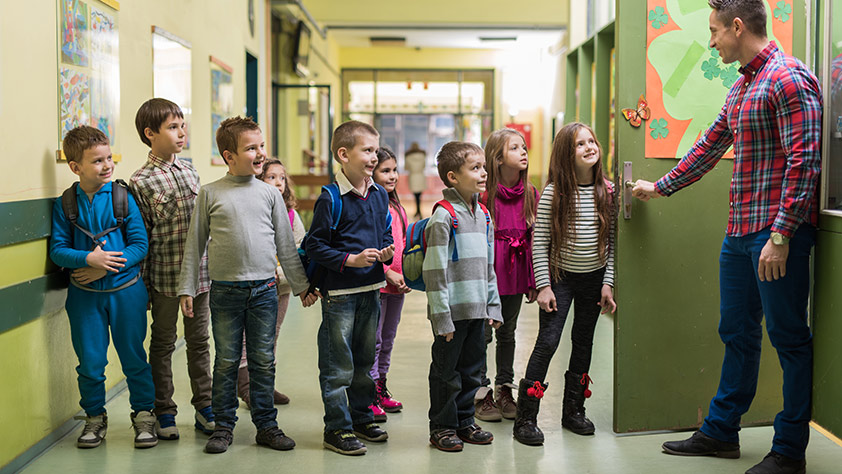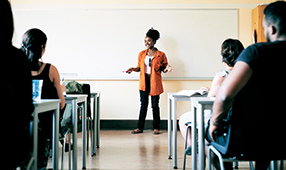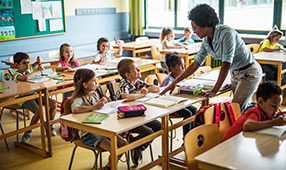At the start of a new year, many educators are just as nervous as their students, especially if it’s their first year teaching. Why do so many teachers struggle with first-day jitters? It can be difficult to feel prepared—in fact, can you ever really be ready for a class of students you may never have met? Or maybe last year was particularly rough, or you’ve heard rumors about your upcoming class, and that stress gets carried over into the new school year.
Whatever the reason, experts agree that the best antidote for a bad case of back-to-school butterflies is a detailed classroom management plan—one that outlines your every move from the first day of school until the last bell rings for summer break. So we asked for advice from the experts’ experts: Harry and Rosemary Wong, authors of “The First Days of School” and “THE Classroom Management Book.”
“Just as a pilot has a flight plan and a coach has a game plan, effective teachers have a classroom management plan that students learn and understand,” say the Wongs.
This plan is more than just a list of teaching strategies. It’s a way of operating in the classroom that allows teachers to be proactive rather than reactive. Do it right, they say, and you never have to waste time repeating what students should be doing or reprimanding them for misbehaving.
Establish ground rules
Procedures govern everything we do in life from boarding a plane to ordering food at a drive-thru. Without procedures, these otherwise orderly activities would create mayhem. Students require similar constructs. They learn best when they know what to expect.
In an observational study by Douglas Brooks, teachers who began the first day of school by diving right into the subject matter spent the school year reacting to students’ behavior. Those who started by explaining to students how the classroom was organized had a more enjoyable experience.
To that end, the Wongs recommend starting the first day of school with a script, or better yet, a PowerPoint presentation, that explains procedures, walks students through their responsibilities and ensures every student understands how to be successful. In fact, according to the Wongs, successful teachers have procedures for everything from selecting seats to exiting the classroom at the end of the day.
Consistency is key
Students thrive in a safe classroom environment that is predictable, reliable and consistent. “One of the most important gifts we can give our students is to be consistent,” say the Wongs. “Students need to feel that someone is responsible for their environment—someone who not only sets limits, but maintains them.”
Take Starbucks, for example. If you’re a regular customer, you can go into any Starbucks in the world and you know what to do. The logo calls you to the door, the environment is familiar (even if you’ve never visited a particular location) and the baristas all speak the same language. Plus, the trusty menu is always readily visible from the back wall.
Students need a similar roadmap for navigating your classroom. The best path: Post an agenda on the board before students arrive so they know what’s going to happen during the day. A consistent list of daily activities helps students stay on task—and it facilitates transitional periods to boot.
The Wongs cite a special education teacher in Ohio who posts pictures of the sequence of events for the day in her classroom and uses songs for transitions. “The kids all know the plan. They know what’s going to happen next,” say the Wongs.
So while the agenda may change from day to day, the classroom procedures and transitions remain the same. It’s an ideal construct for learning—and retaining—new information since kids don’t have to waste precious brainpower wondering what’s next. Instead they can focus their attention on their course work.
Be positive!
Just saying, “hello,” “welcome,” or “I’m glad you’re here,” can make a dramatic impact on a child’s learning. Research shows simply greeting students can raise their level of engagement in your class by a whopping 32%!
Take that morning greeting and build on it with positive reinforcement. When students meet your expectations, call attention to their actions with specific praise. It’s not enough to say “Good job, Nicole,” or “Nice work, Johnny.” You have to identify the specific behavior you want to encourage. The bonus: Students who weren’t paying attention have another opportunity to learn what’s expected of them.
When a classroom is well-managed with procedures, students stay motivated and on task; the school year will flow flawlessly from the first day to the last. Perhaps most importantly, the students succeed and achieve! A structured classroom also improves your attitude and leadership, which projects outward. If you view your glass (and class) as half-full, your kids will, too.












